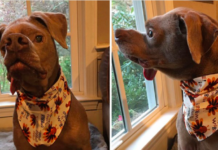Last Updated on November 6, 2023 by Fumipets
Discovering the World of 10 Black and White Cow Breeds
Black and white cow breeds, often referred to as dairy cattle, are known for their distinctive coat patterns and their significant contributions to the dairy industry. These cows are prized for their milk production, making them essential for dairy farmers.
This guide explores various black and white cow breeds, their characteristics, and their roles in dairy farming. Whether you’re a cattle enthusiast or interested in the dairy industry, this summary provides valuable insights into these iconic breeds.
Black and White Cow Breeds
Despite the many idealized depictions of black and white cows grazing in the countryside, animals with these colors are quite uncommon. Did you know that there are really 10 kinds of black and white cattle in addition to the most well-known, the Holstein, a dairy cow that is widespread around the world?
The 10 Most Popular Breeds of Black and White Cows
1. Holstein Friesian Cattle

Holsteins are simple to identify. These dairy cows might have black and red markings in addition to their black and white spots. This breed is the most often utilized cow on dairy farms because of its exceptional degree of milk production.
The initial purpose of the Holstein breed was to produce a lot of milk from little feed. The origins of the breed are the crossbreeding of white Friesians with black Batavian cattle. Since its introduction to the country in 1852, the Holstein has been the most popular breed of dairy cow.
The typical productive lifetime of a Holstein cow is 6 years, during which time they produce milk. On average, they are milked three times daily, yielding 72,000 pounds of milk annually.
2. Lakenvelder

Known also as Dutch Belted cattle, Lakenvelder cattle are striped animals that have a belted look. Originally from Switzerland and Austria, this breed moved to the Netherlands in the seventeenth century.
The white band across their center serves as an identifying trait for Lakenvelder cattle. Although they were first bred as dairy cows, their stocky form makes them more productive as beef cattle.
3. Brahman Cattle

Indians revere Brahman cattle, which may be identified by a noticeable hump on their backs. This breed has a high tolerance for adverse weather since it has long thrived on insufficient food supply.
Brahman bulls, or male cows, are famously grown in North America as rodeo stock. The American Brahman Breeders Association in Houston, Texas, evaluates and keeps track of bloodlines to guarantee the purity of the breed.
4. Belted Galloway

Similar to the Lakenvelder, “Belties” or “Oreo Cattle” have a characteristic white belt. Due to its double-coated fur, this species is renowned for its ability to endure even the hardest winter conditions.
The medium-sized, sturdy Belted Galloway is a breed developed largely for beef.
5. Guzerat

Numerous names have been given to the Guzerat, including Guzera, Gujera, Gujrati, Gusera, and Guzerath. Their head and forequarters are clearly marked in black. These strong cattle are mostly used as draft animals. They resemble American Brahmans in physique and have large horns. They are also developed to produce dairy and beef.
Although the Guzerat breed is now found in India, it was first developed in Brazil by mating Indian Kankrej cattle with Taurine Crioulo cattle. To commemorate their ancestry, they were given the Portuguese name Guzerat.
6. Texas Longhorn

Texas Longhorn cattle may be identified by their longhorns and distinctive color patterns. These cows are kind-hearted, very smart, and have a lot of economic promise for the cattle sector.
There are several colors available for this species, including white with black markings. Although their horns are what set them apart, they are also renowned for having high reproductive rates and being simple to calve. Due to the high-quality, lean meat produced by Texas Longhorns, the beef business has become increasingly popular in recent years.
7. Dhanni

Dhanni cattle are native to Pakistan’s Punjab province and are easily recognized by the distinctive splashing on their belly and legs that gives them a beautiful black and white color pattern.
Dhannis may be traced to Alexander the Great, who traveled much and had black animals with him. They crossed with native white cows after arriving in Pakistan, giving rise to the Dhanni that exists today.
This breed is widely used by Pakistani farmers for dairy, meat, and draft labour. They are also well-liked for steer riding and cattle shows. These cows are still employed to pull plows in more rural regions and do laborious agricultural work.
8. German Black Pied

The German Black Pied is a three-breed hybrid that is smaller and more prolific than the Holstein. The breed was established in 1963 when a Jersey bull and a German Black Pied cow were crossed. To create the modern German Black Pied breed, the offspring of this mix were mated with a Holstein.
The German Black Pied cattle are similar to Holstein cattle in appearance, however they live longer. Additionally, they still exhibit the extraordinary milk production traits of their forebears.
9. Blaarkop

Dutch cattle breed called the Blaarkop are black and white. Blister Head is the English translation of the Dutch term blaarkop. The term alludes to color patches or blisters that appear around the eyes and face of these cattle. These cows are simple to identify since they are primarily black with a white head and belly.
The Blaarkop has a lengthy history that dates back to the fourteenth century. This breed, which is currently being developed in the Dutch area of Groningen, may be traced back to cattle from the Middle Ages. It is a dual-purpose breed that produces both meat and dairy products.
10. Girolando

Brazilian Girolando cattle are a highly adaptable breed that can withstand hot weather and tropical illnesses. They are simple to maintain and excellent foragers that don’t need help to get food.
To boost Brazil’s dairy output, the Girolando breed was created by crossing a Holstein with a Gyr. Despite their outward similarity to Holsteins, they are thought to be different and are often mistaken for them. Around 80% of the milk produced in Brazil is produced by girolando cattle.
Conclusion
Cattle that are black and white stand out due to their distinctive markings and coloration. Around the globe, there are several black and white breeds that serve a variety of functions. Due to the widespread preference for their markings over other prevalent coat colors, many black and white cattle are bred expressly to keep their color patterns.
FAQs About Black and White Cow Breeds
What are some well-known black and white cow breeds?
Prominent black and white cow breeds include Holstein, Ayrshire, and Dutch Belted. Holsteins are particularly famous for their high milk production.
Why are black and white cows popular in the dairy industry?
Black and white cows, such as Holsteins, are popular in the dairy industry due to their exceptional milk production capabilities. They provide large quantities of milk with high butterfat content.
Do black and white cows have specific care requirements?
While care requirements can vary by breed, black and white cows generally need proper nutrition, shelter, and regular health check-ups to maintain their milk production and overall well-being.
What is the typical lifespan of black and white dairy cows?
Black and white dairy cows can live for about 6-8 years on average, with some individuals exceeding this lifespan with excellent care.
Are black and white cow breeds suitable for beef production?
While black and white cows are primarily bred for dairy, their male calves and older cows may be used for beef production. However, other beef cattle breeds are more commonly raised for meat.

















